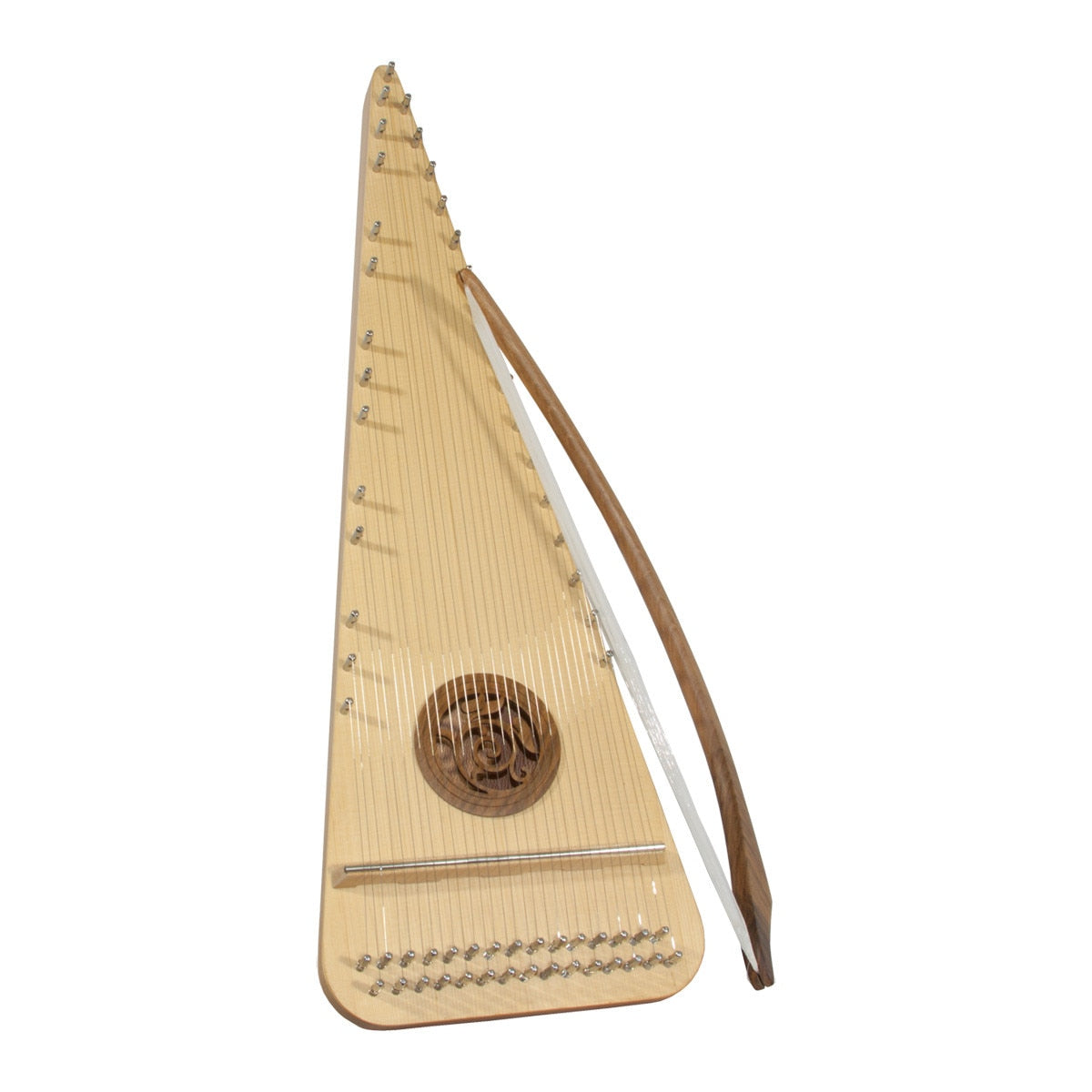Description
- This right-handed psaltery features 30 steel strings, spanning from F4 to Bb6. Constructed with a spruce soundboard on a body of lacewood, it boasts a single sound hole intricately carved with a rosette made of rosewood.
- The Bowed Psaltery is a visually appealing instrument that produces a clear and ethereal sound. Its simplicity of play makes it an accessible instrument for beginners. The psaltery bow is held in the dominant hand, and only one string is played at a time, bowed between the Hitch Pins. Alternatively, two bows can be used, one in each hand, allowing for the simultaneous playing of each side of the instrument.
- Mastering the psaltery requires understanding the placement of the notes. Observe the instrument, and you will notice that the Hitch Pins are evenly spaced along one side, like the white keys on a piano. On the opposite side, the Hitch Pins are arranged in groups of three and two, with spaces between them, akin to the black keys on a piano. Bowing the evenly spaced strings produces the natural notes, while sharps and flats are achieved by extending the bow to the opposite side of the instrument.
- Right-handed psalteries have the natural notes positioned on the right side, while left-handed psalteries have them on the left.
- Before playing, the bow must be prepared by applying rosin. To achieve this, use a key or nail file to rough up the surface of the new rosin. Begin by rosinning the ends of the hairs in short, rapid strokes, followed by rosinning the entire length of the hairs from end to end. Rotate the rosin cake under the hairs as you drag the bow across to ensure an even distribution of rosin powder. Never handle the bow hairs with your hands, as oils from your skin can leave permanent slick spots that hinder rosin retention.
- After each use, clean your bow with a soft, dry cloth. Occasionally, wipe the playing area of the strings. Excessive rosin accumulation, particularly on the undersides of the strings, can negatively impact the instrument’s tone and playability.
- Broken or loose hairs are common and will not affect the bow’s playing characteristics. If a hair breaks, do not pluck it out. Instead, carefully cut the hair, leaving a small portion at both ends.
- Tuning: F4 - Bb6
- Overall dimensions: 7.5 inches in width by 20.5 inches in length
- Body/Bowl: 20.5 inches x 1.5 inches x 7.5 inches
- Strings at the Bridge: 5.5 inches in width
- Scale Length: 17.5 inches (longest string)


